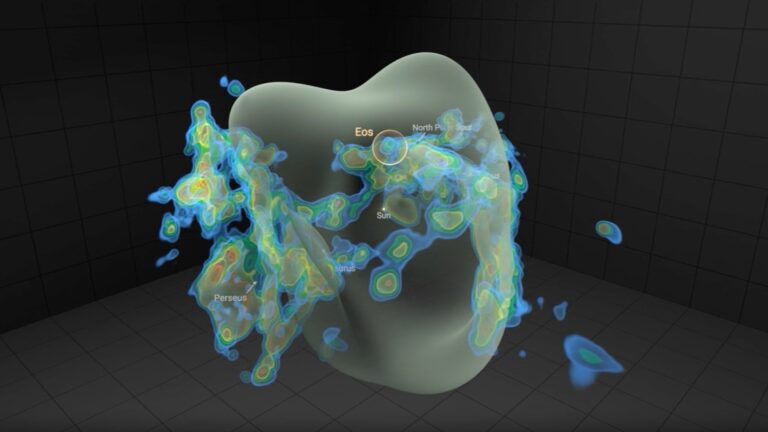Jupiter’s Strange Ammonia Puzzle Solved by Cosmic ‘Mushballs’ – The Daily Galaxy
2025-04-22T17:00:00Z
Jupiter’s storms may produce giant slushy hailstones—mushballs—that drag ammonia deep into the atmosphere, solving a long-standing mystery.
In a new study published in Science Advances, a team led by planetary scientist Chris Moeckel from UC Berkeley offers a striking explanation for one of the most puzzling phenomena in Jupiter’s atmosphere: the mysterious and uneven distribution of ammonia. Using a mix of data from NASA’s Juno probe and the Hubble Space Telescope, the researchers propose that Jupiter experiences extreme hailstorms that generate “mushballs”.
How Jupiter’s Weather Works—and Why It’s Nothing Like Earth’s
These mushballs, formed in violent thunderstorms, may be falling deep into the planet’s troposphere, carrying ammonia away from the upper atmosphere and resolving a decades-old chemical conundrum.
The weather on Jupiter is famously wild, with superstorms, cyclones, and lightning events dwarfing anything seen on Earth. But it’s not just the size that sets it apart. The new hypothesis is rooted in dynamic vertical movements within Jupiter’s atmosphere.
When giant storms churn up water vapor from deep below the clouds, it rises into colder layers where it interacts with ammonia vapor. There, under the extreme cold, the ammonia acts like antifreeze, allowing ammonia-water droplets to form.
“In this new state, falling droplets of ammonia-water liquid can collide with the upgoing water-ice crystals and electrify the clouds. This was a big surprise, as ammonia-water clouds do not exist on Earth,” explained Heidi Becker, a planetary scientist.
Credit: NASA
The Evidence: A Storm Still Raging Today
The research team analyzed data from July 2017, when Juno flew directly over an active lightning storm that continues to rage even now. Juno’s microwave radiometer recorded six radio frequency channels, while Hubble observed the same region in ultraviolet, optical, and near-infrared.
What they found was startling: not only did the storm exhibit signs of intense electrical activity, but there was also a mysterious radio signal—a faint “cold spot” consistent with either melting ice or ammonia release below the cloud tops. This signal served as the “smoking gun” for the mushball theory, according to Moeckel.
In their model, the mushballs formed by these processes are large and dense enough to survive a long descent into Jupiter’s interior. As they fall, they remove ammonia from the upper atmosphere and deliver it to depths of around 150 kilometers, where they eventually evaporate and release their ammonia payload.
Credit: NASA/JPL-Caltech/SwRI/MSSS/Gerald Eichstädt/Heidi N. Becker/Koji Kuramura
A Mechanism Shared by Other Gas Giants?
The implications go far beyond Jupiter. Similar atmospheric behavior has been observed or theorized on other giant planets like Saturn, Uranus, and Neptune. All these planets show patchy ammonia patterns, and all experience extreme atmospheric dynamics. If mushballs are responsible for Jupiter’s ammonia depletion, they might also be active on other gas giants—even on exoplanets.
The study opens new questions about the internal circulation systems of gas giants, challenging the long-standing assumption that what we see in the upper atmosphere is representative of what lies beneath.
As Moeckel put it: “Every time you look at Jupiter, it’s mostly just surface level. It’s shallow, but a few things—vortices and these big storms—can punch through,” he added, “We’re basically showing that the top of the atmosphere is actually a pretty bad representative of what is inside the planet.”
Auto-posted from news source






